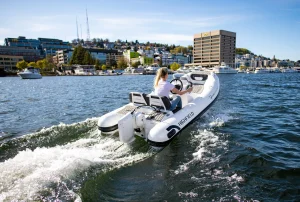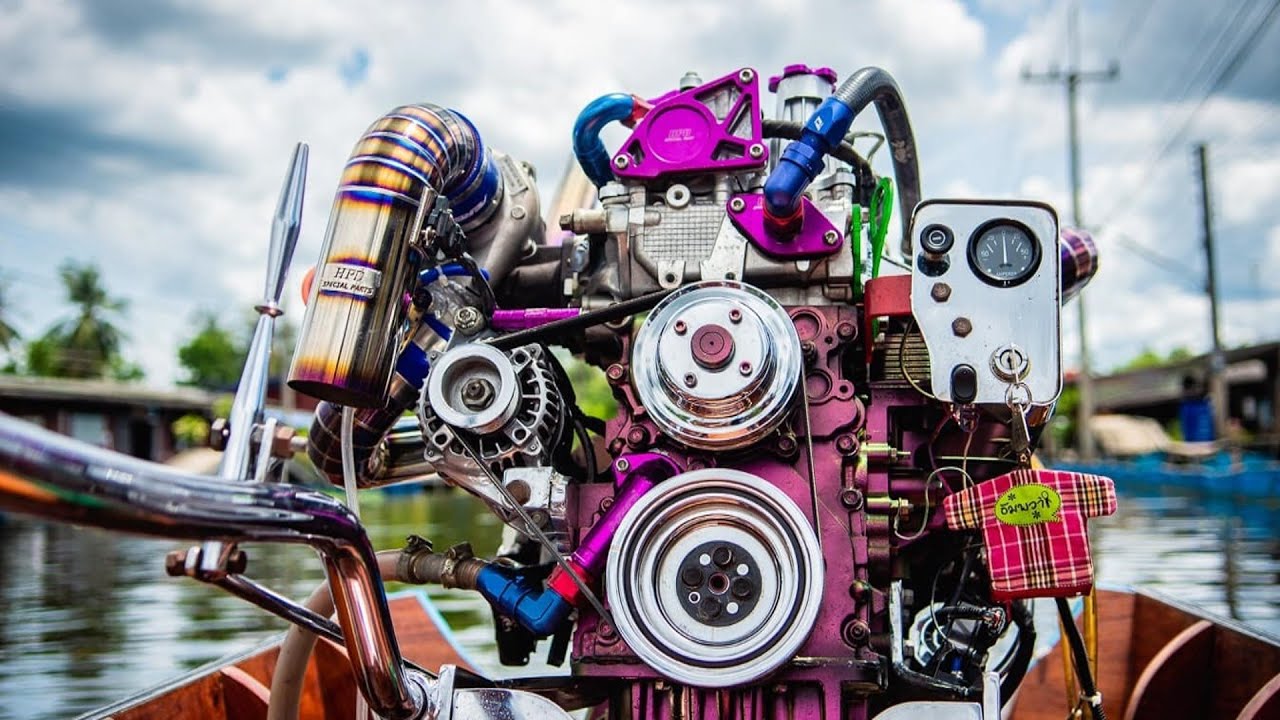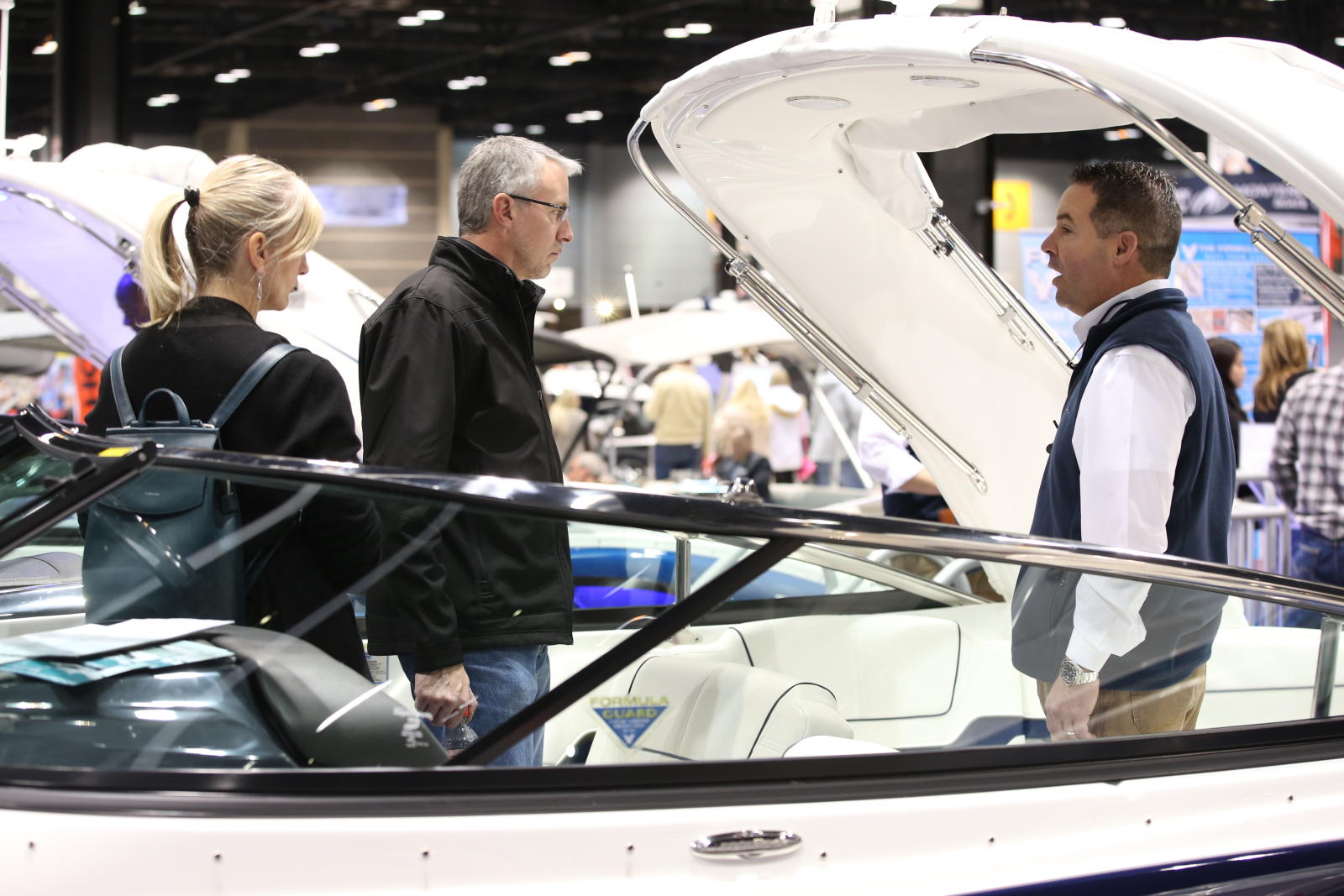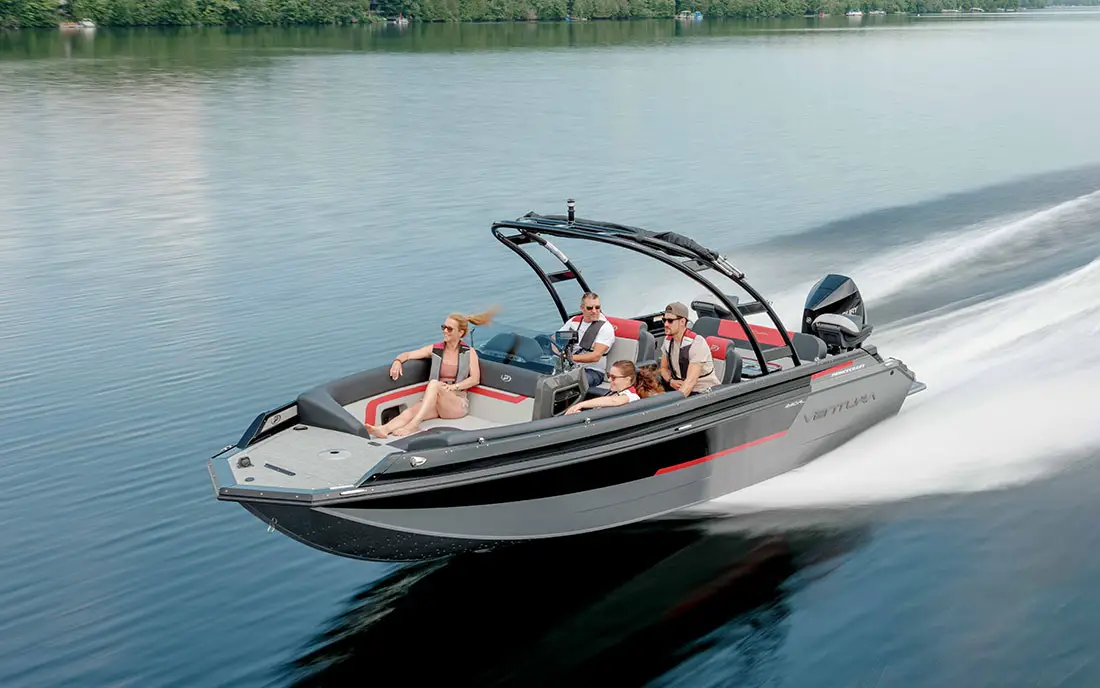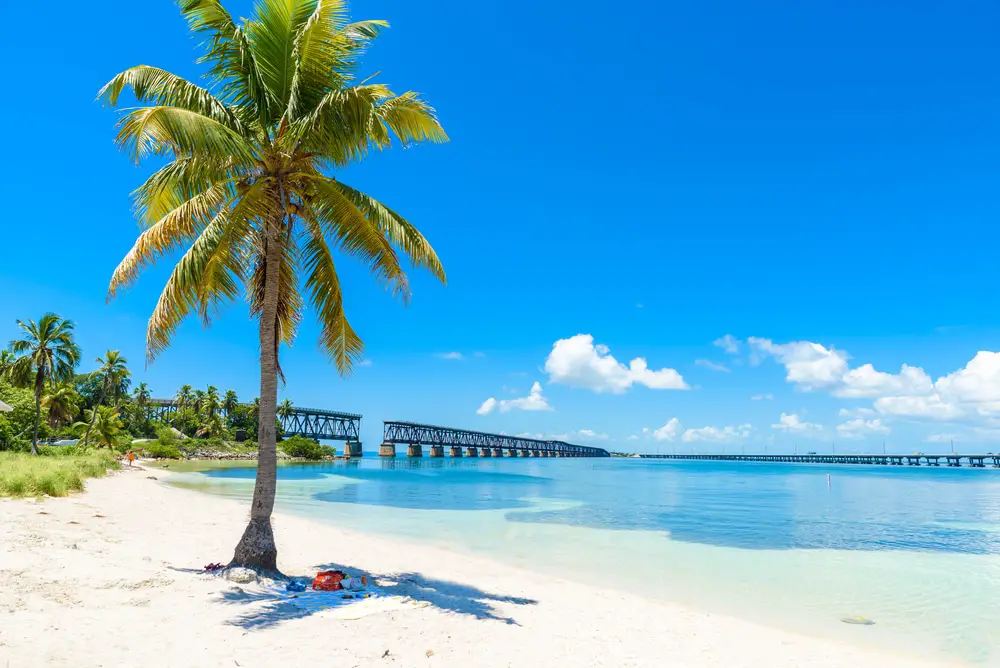Barge Boats
Barges For Sale: Insider Tips for Smart Purchasing
Barges are an essential component of maritime transportation, primarily used for the movement of goods across rivers, canals, and coastal areas. These flat-bottomed vessels are designed to carry various types of cargo, providing companies and individuals with efficient and reliable shipping solutions. As different kinds of barges cater to specific needs, those looking to purchase one should consider each barge's unique features, engine systems, and certification requirements before making a decision.
Several factors can impact the buying process, ranging from the barge's year of build and condition to its navigational capabilities in specific areas. Additionally, the availability of barges for sale can depend on their location and any associated shipping costs. By thoroughly examining these factors, buyers can make an informed decision while shopping for a suitable barge and obtaining the best possible price.
Key Takeaways
- Barges are versatile maritime vessels designed for efficient cargo transportation.
- Buyers should consider factors such as features, engine systems, and certification requirements.
- The age, condition, and location of a barge play a significant role in the purchasing process.
Understanding Barges
Barges are versatile vessels used for various purposes, including transportation, construction, and storage. These flat-bottomed boats are designed to carry large volumes of cargo and can be towed or pushed through waterways, making them ideal for both inland and coastal operations.
In terms of type, there are several common barges available in the market. One example is the deck barge, which has a flat and open deck suitable for holding heavy machinery like cranes and excavators. It can also support oversized objects, such as bridge sections, for transportation. These barges are commonly used in coastal and inshore boating, being able to accommodate an average of 14 passengers.
Another type of barge is the spud barge, which is equipped with spuds or long vertical columns that can be driven into the seabed to hold the barge in place. Spud barges are commonly used for marine construction projects, including dredging and pile driving.
Sectional barges are another category, designed for increased flexibility in transportation and assembly. These barges can be broken down into smaller sections, allowing them to be easily moved or transported on trucks. Once on site, the sections can be pinned together to create a larger barge for the required purpose.
The size of a barge varies depending on its intended use and type. Typically, larger barges can handle heavier loads and navigate open waters more efficiently than smaller ones. For instance, the flat top barge we found measures 55.31 x 18.73 x 1.01/2.33 meters, built in 2004, and has a carrying capacity of 825,000 Euros.
In summary, barges are an essential part of maritime transport and construction activities, offering a range of types and sizes suited for various operations. From deck barges to spud and sectional barges, these versatile vessels can accommodate different cargo loads, making them a valuable asset in the maritime industry.
Classes of Barges
Barges are versatile vessels that come in various classes, each designed to cater to specific needs and requirements. One common classification of barges is based on their cargo-carrying capabilities. Some barges are designed to transport heavy and bulky cargoes, such as construction materials, coal, or grain. Others are built to carry liquid cargoes like oil, chemicals, and other bulk liquids.
Cargo barges can be further categorized into two types – flat-top barges and barges with sidewalls. Flat-top barges provide a spacious, open platform to store and transport oversized and heavy loads. On the other hand, barges with sidewalls offer additional protection and safety for the cargo during transit, especially in adverse weather conditions.
Crane barges are another class specifically designed to support heavy lifting operations at sea. They are equipped with a large, heavy-duty crane, making them ideal for a variety of tasks such as construction, salvage, and offshore projects. In addition to their lifting capabilities, some crane barges may also be utilized for accommodation and workspace purposes, providing essential facilities for project teams working on-site.
Conversion barges are a category that involves modifying existing barge designs to serve a new purpose. These conversions can range from adding living quarters to equipping the barge with specific equipment for a particular job. The flexibility of conversion barges enables operators to tailor their vessels according to project requirements and minimize costs associated with purchasing specialized barges.
In summary, multiple classes of barges cater to various needs in the marine industry. From cargo and crane barges to conversion barges, these vessels play a vital role in numerous offshore and onshore operations. By understanding the distinct classifications and purposes of barges, operators can make informed decisions when purchasing or leasing barges for their specific tasks.
Key Features and Specifications
In this section, we will discuss the important features and specifications of barges available for sale, focusing on dimensions, construction, deadweight, horsepower, and propulsion.
Dimensions
The dimensions of a barge can vary based on its intended use and capacity. Typically, these vessels range in length from 40 to over 200 feet, with widths between 10 and 50 feet. The height of a barge also varies depending on the type, such as deck, hopper, or crane barges. For example, a 205' Keyway Barge has a length of 205 feet, a width of 50 feet, and a height of 14 feet, featuring a 57' x 10' keyway slot aft on the centerline.
Construction
Barges are generally built with steel or aluminum, depending on the barge's purpose. Steel barges are more common, offering durability and resistance to damage, while aluminum barges are lighter and primarily used in operations that require low water draft. The construction also includes important features such as spud wells, winches, and bulkheads, which play a crucial role in the barge's performance, safety, and stability.
Deadweight
Deadweight refers to the maximum weight a barge can safely carry, including cargo, fuel, water, and crew. A barge's deadweight is imperative to understand its carrying capacity and limitations for transporting goods. Various types of barges have different deadweight capacities, which can range from several hundred to thousands of tons. The barge's deadweight capacity will depend on factors like its dimensions, construction, and intended use.
Horsepower
The horsepower of a barge represents the engine's power output, which is primarily associated with propulsion units. Barges can have varying horsepower outputs, depending on the engine's size and requirements for the specific type of barge. Higher horsepower may be needed for larger and heavier barges, as well as those intended to navigate in more challenging conditions. It is essential to consider the barge's horsepower when evaluating its performance capabilities.
Propulsion
The propulsion system of a barge can be divided into two main types: self-propelled and non-self-propelled. Self-propelled barges have their own engines and can navigate independently, whereas non-self-propelled barges require a tugboat or a tow to move across water. Propulsion systems vary, such as diesel engines, gas turbines, or electric motors, depending on the barge's size, weight, and capacity. The propulsion system directly affects the barge's maneuverability, speed, and efficiency, making it an essential consideration when selecting a barge for sale.
Navigational Areas
Navigating barges in various waterways requires a deep understanding of the characteristics and challenges each area presents. In this section, we will discuss some popular navigational areas for barges, including canals, rivers, the East Coast, the Middle East, and North America.
Canals serve as artificial waterways, often connecting natural rivers and lakes to facilitate the movement of cargo and passengers. Notable examples include the Panama Canal and the Suez Canal. When operating a barge in a canal system, it is essential to be familiar with the dimensions, lock systems, and special regulations to ensure safe and efficient navigation.
Rivers provide a natural passageway for barges in various regions around the world. In North America, the Mississippi River is a prime example of a major waterway where numerous barges transport goods daily. European rivers such as the Danube, Rhine, and Volga also play a key role in the transportation of cargo. Barge operators should be aware of water levels, currents, and local regulations when navigating through rivers.
The East Coast of the United States offers a network of waterways, including the Intercoastal Waterway, which stretches from the northern Atlantic coast down to Florida and the Gulf of Mexico. This system provides a safe and efficient route for barges to navigate along the eastern seaboard. Tides, coastal navigational aids, and weather patterns are essential factors to consider when operating a barge in this area.
The Middle East is an important region for maritime trade, and several key waterways such as the Suez Canal, the Strait of Hormuz, and the Red Sea play a central role in facilitating transportation in this part of the world. Due to the region's strategic significance, particular attention to security measures, local regulations, and geopolitical considerations is crucial when navigating barges in the Middle East.
Lastly, North America offers a diverse range of navigational areas for barges, from the Great Lakes to the Gulf of Mexico and the vast river networks in between. Understanding the regional weather patterns, navigational challenges, and local requirements for each area is vital to successfully operate a barge in North American waterways.
In summary, operating a barge in various navigational areas requires not only the knowledge of specific locations but also the ability to adapt to different environments, regional regulations, and geopolitical contexts. Maintaining a thorough understanding of these factors is critical for ensuring safe and efficient barge navigation.
Year of Build and Condition
Barges come in a variety of build years, ranging from older models built in 1979 to more recent builds from 2020. The year of build is an essential factor to consider, as it may affect the overall condition, performance, and reliability of the barge.
For instance, a 2004 flat top/rock barge for sale in the Mediterranean has a solid structure and comes with sidewalls, making it a reliable choice for potential buyers. This barge was last updated in 2023 and is maintained in line with Bureau Veritas standards, with its next special survey scheduled for March 2025.
In contrast, some older barges built in 1979 may require more frequent maintenance and repairs to keep them seaworthy. However, these barges can still be an option for buyers looking for a more affordable alternative, provided they carefully assess their condition.
It is also essential to consider the condition of the barge beyond its year of build. Some barges, such as a 2012 model, can still be in excellent shape if properly maintained and updated. These updates may include fresh paint, new equipment installations, and more.
Buyers can also opt for brand new barges, such as those built in 2020 or 2022, which are likely to have the latest technology and design features. These barges can be a wise investment for those looking to minimize the need for ongoing maintenance and repairs.
In summary, when considering barges for sale, it is crucial to take into account the year of build and the overall condition of the vessel. Buyers should carefully assess the barge's maintenance history, recent updates, and any cosmetic or structural issues before making a decision. Balancing these factors can help ensure that the chosen barge meets the buyer's expectations and requirements.
Barge Certification and Registry
When purchasing a barge, it is essential to ensure that it has the proper certification and registry, thus ensuring its compliance with industry standards and regulations. Barge certifications are issued by classification societies, such as RINA (Registro Italiano Navale) and Bureau Veritas. These organizations are responsible for setting the standards and guidelines for the design, construction, and operation of vessels, including barges.
One of the primary certifications needed for a barge is the US Coast Guard (USCG) approval. The USCG is responsible for enforcing maritime safety and security standards in the United States, and the approval certifies that a barge meets the necessary requirements. In addition to USCG approval, it is essential for a barge to be registered under a particular flag. The flag signifies the nationality of the barge and implies that it is subject to the laws and regulations of that nation.
A common choice for vessel registration is the United States flag, also known as US Flag. Registering a barge under the US Flag offers several benefits, including access to domestic trade markets, support from US mariner unions, and adherence to stringent safety and security regulations. Furthermore, US Flag vessels are often preferred for government and military contracts, thus potentially providing more business opportunities for barge owners.
In conclusion, obtaining the proper barge certification and registry is crucial for ensuring safe and compliant operation in the maritime industry. Certifications from reputable organizations such as RINA and Bureau Veritas, combined with USCG approval and US Flag registration, can provide a strong foundation for a barge's compliance and success in the market.
The Engine and Powering Systems
Main Engines
The main engines are a crucial component of a barge, providing the required power for propulsion. A popular choice for main engines in barge boats is the John Deere engines, known for their reliability and performance. Twin screw systems are often utilized, with two main engines connected to two separate propellers, enabling more efficient maneuverability and increased power.
Outboard
Outboard motors are another powering option for barges, mounted externally and providing propulsion by a jet drive or propeller. Outboard motors typically offer a more compact and lighter design compared to inboard engines. A common example of an outboard motor used in barges is a 200HP Mercury 2-stroke EFI engine, providing adequate power for a variety of barge sizes and purposes.
Generator
Generators play an essential role in providing electrical power to the barge. They may run on various fuel types such as gasoline, diesel, or other alternative fuels. A barge's generator is often connected to a Twin Disc transmission system, ensuring a reliable power transmission between the engine and the generator. In some cases, a barge may require additional generators or an upgraded generator system to support its power requirements.
In summary, the engine and powering systems of a barge play an important role in its functionality, efficiency, and adaptability. By carefully selecting the right components such as main engines, outboard motors, and generators – as well as considering reliable brands like John Deere and Twin Disc – buyers of barge boats for sale can ensure a smooth and efficient barge operation.
Location and Shipping
In the world of barges, location plays a significant role in determining the availability and selection of these vessels. Various regions have their unique selection of barges, catering to diverse needs and purposes.
In Canada, for instance, interested buyers can find a variety of barges suited for the country's waterways and the heavy ice-laden environments. The country's inland waterways and the Great Lakes necessitate durable and agile barges capable of navigating these challenging waters.
The Caribbean region offers a variety of barges for sale, such as spud, deck, and hopper barges, commonly used in the thriving maritime industry. Equipped to handle infrastructure development, dredging, and transport services, these vessels are ideal for the region's smaller ports and island locations.
In the Northeast US, the demand for barges is primarily driven by the extensive coastline, numerous harbors, and busy ports. There is a selection of deck cargo barges, crane, and container barges to aid in maritime transport and port operations.
Europe is another significant player in the barge market, with a robust inland shipping network comprised of rivers, canals, and coastal areas. Here, buyers can find a comprehensive range of barges, including multipurpose vessels designed for cargo transportation, dredging, and construction works.
Shipping barges can be a complex process, considering their large size and logistical requirements. However, professional shipping and brokerage services like Harmony Marine Shipbrokers and Horizon Ship Brokers, Inc. provide assistance to ensure safe and efficient transportation of barges to the target location.
In conclusion, when searching for barges for sale, keep in mind the diverse range of options available in different regions. Choosing the right barge that suits your specific needs and location will ensure a successful maritime endeavor.
Price and Sales Information
When looking for barges for sale, it's important to consider both the price and the availability of various options on the market. Several websites and ship brokerage firms specialize in the sale of barges, and their listings provide a wealth of information on pricing and availability.
One option to consider is browsing the listings on Harmony Marine Shipbrokers, where you can find barges with different specifications and price points. For instance, their website features a floating dock for sale in the Mediterranean region, built in 2017 and with a deadweight of 18,491 tons.
Another online platform to explore barges for sale is Horizon Ship Brokers, Inc.. They offer a wide range of options, including a 180-foot deck cargo barge from Indonesia, built in 2022, and with a deadweight of 1,900 tons.
Maritime Sales also has a variety of barges for sale, including deck barges, tank barges, spud barges, self-propelled barges, pile-driving barges, and hopper barges. Their listings contain relevant information on each barge, allowing potential buyers to compare options before making a decision.
For those interested in used barges, Ocean Marine Brokerage Services offers a selection of pre-owned vessels to suit different budgets and requirements. Their inventory includes barges that can address massive maritime shipping needs.
Lastly, Damco Marine Management, Inc. has an online inventory of 34 barges for sale, including a newly listed floating pedestal mounted crane barge. With a wide array of options, buyers can find the right barge to fulfill their needs.
In conclusion, when searching for barges for sale, consider checking out various websites and brokerages to find the best options and prices. By comparing available barges, buyers can make an informed decision to meet their specific maritime shipping requirements.
Unique Bargain Options
When looking for barges for sale, there are some unique bargain options to consider. Among these are custom barges, truckable barges, and those with a raked bow. Each of these options offers distinct advantages and features to cater to specific needs.
Custom barges are tailored to meet the specific requirements of a buyer. This often results in a vessel perfectly suited to the intended purpose and environment. Customization may include alterations to the size, construction materials, or onboard equipment. Many online marketplaces offer custom barges, allowing buyers to find the ideal vessel to suit their needs.
Truckable barges are smaller, modular barges that can be disassembled and transported via truck. These barges offer increased flexibility and are ideal for projects that require transportation over land. The ability to disassemble and move the barge also saves costs when compared to traditional towed options. As such, truckable barges provide an excellent option for those looking for a cost-effective and versatile solution.
Barges with a raked bow feature a sloping front, allowing them to cut through the water more efficiently. This design feature helps in reducing resistance and increasing the overall speed of the barge. Additionally, a raked bow can help to reduce fuel consumption, making these types of barges a more economical choice for many applications.
Exploring these unique barge options can yield a variety of opportunities for those in search of a reliable and accommodating vessel. The combination of customization, transportability, and enhanced design features makes each of these barges a fantastic choice for specific needs and requirements. When considering a barge purchase or rental, it is essential to weigh the various advantages and select the option best suited for the intended use.
Frequently Asked Questions
What factors determine the price of a barge?
The price of a barge can vary widely depending on factors such as age, condition, capacity, and features of the vessel. For example, tanker barges can cost anywhere from $500,000 to several million dollars. Other factors that impact price include the history of the barge, the materials used in its construction, and the cost of any necessary modifications or upgrades.
How do I choose the right type of barge for my needs?
Choosing the right type of barge for your needs depends on your intended purpose for the vessel. Consider factors like the type of cargo you will transport, the operating environment, and any regulations that apply in your area. It's important to research various barge types and consult industry professionals, such as brokerages or other vessel owners, to gain insights on the best barges for your specific operations.
What are common features to consider when purchasing a barge?
Some common features to consider when purchasing a barge include its size, materials, construction, and cargo capacity. Additional factors to consider include the barge's propulsion system, deck equipment, safety measures, and any machinery or equipment that may be included. Keep in mind the potential for future modifications or upgrades when evaluating the barge's features.
Where can I find reputable sellers of barges?
Reputable sellers of barges can be found through various channels, such as online marketplaces, specialized brokerages, and industry associations. Some examples of barge brokers and sellers include Heartland Barge and Ocean Marine Brokerage Services. It's essential to perform due diligence and verify the seller's credentials and reputation before making a purchase.
Are there financing options available for buying barges?
Yes, there are financing options available for the purchase of barges through banks, marine lenders, and other financial institutions. Be prepared to provide financial statements, credit history, and details about the desired barge vessel as part of the application process. Keep in mind that interest rates and terms may vary depending on the lender and the nature of the transaction.
What are the maintenance requirements for different types of barges?
Maintenance requirements for barges vary depending on the type, materials, and operating conditions of each vessel. Regular inspections, cleaning, and upkeep, such as addressing rust, paint, and mechanical repairs, are essential to ensure the barge remains functional and compliant with regulations. It is advisable to consult with industry experts or refer to manufacturer guidelines for specific maintenance requirements and best practices for each barge type.
